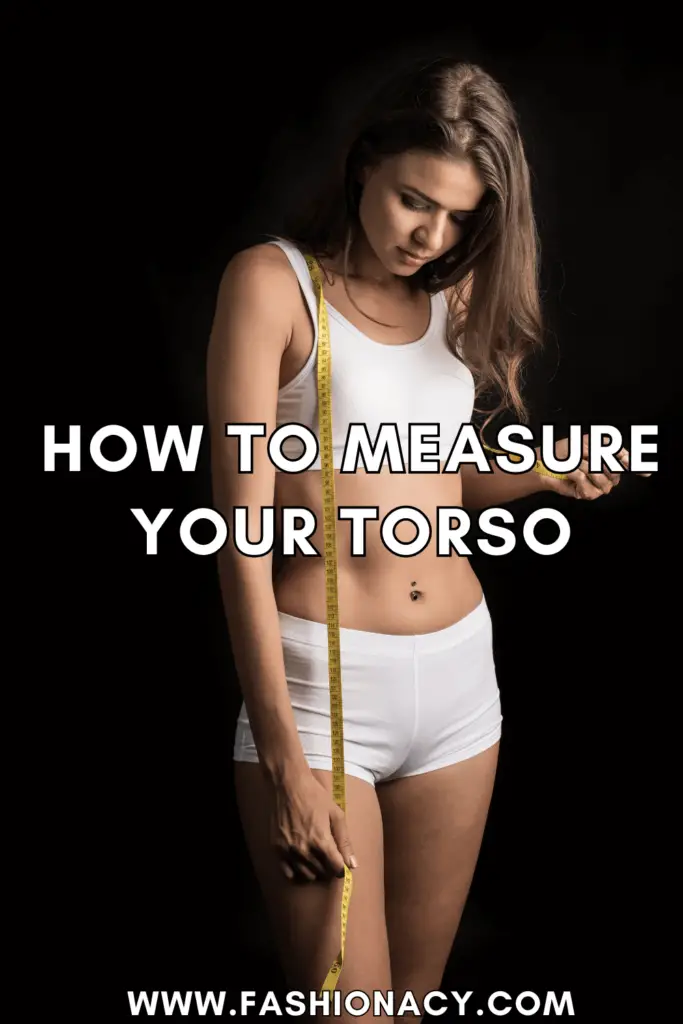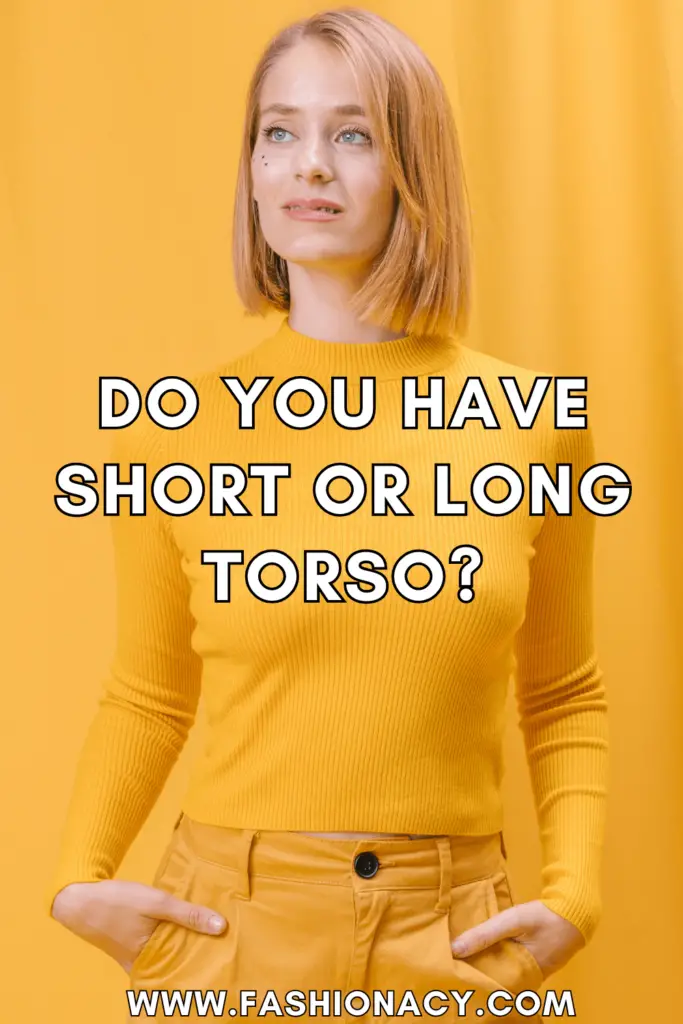
Measuring your torso accurately is important for finding well-fitting clothing, especially for garments like dresses, swimsuits, and tops. Here’s how to measure your torso properly:
You’ll need:
- A flexible measuring tape.
- A mirror (optional but helpful).
- A friend to assist you (optional).
Steps to Measure Your Torso:
- Wear Form-Fitting Clothing: To get accurate measurements, wear form-fitting clothing like a snug T-shirt and shorts or leggings. This helps the measuring tape lie flat against your skin.
- Find a Flat Surface: Stand in front of a mirror if possible, or use a flat wall as a reference point to ensure you’re standing straight and not slouching.
- Locate Your Natural Waist: Your natural waist is the narrowest part of your torso, typically above your belly button and below your ribcage. It’s where your torso naturally bends when you lean to the side.
- Measure Your Waist Circumference: Take the measuring tape and wrap it around your natural waistline. Make sure it’s snug but not so tight that it digs into your skin. Keep the tape parallel to the ground.
- Record the Measurement: Read the measurement from the tape and write it down. Ensure the tape is level all the way around your waist. It’s often best to measure in inches or centimeters for accuracy.
- Measure Your Torso Length: If you need to measure the length of your torso, you can do so by starting at the base of your neck (just above the shoulder line) and extending the tape down the front of your body, following the contour of your chest, bust, and torso, all the way to your natural waist. This measurement can be useful for finding the right dress length or swimsuit fit.
- Repeat for Precision: For added accuracy, it’s a good idea to measure your waist and torso length a few times and take the average of those measurements.
Remember that clothing manufacturers may have their own sizing charts, so it’s essential to refer to their guidelines when determining your size for specific clothing items. Also, keep in mind that your body measurements may change over time, so it’s a good practice to re-measure periodically, especially if you’re shopping for form-fitting garments.

What Kind of Torso Are You?
This video discusses different types of torso shapes beyond traditional body shape categories. The three general torso groupings are discussed.
The host clarifies that the video is not about traditional body shapes like hourglass, rectangle, etc., but focuses on the longitude or vertical proportions of the body, which she believes is often overlooked.
She explains that there are three general groupings for torso types: proportionate, long, and short. She encourages viewers not to take these categories at face value and instead recommends examining various aspects to determine their torso type accurately.
The host suggests a simple test involving placing one hand below the bust and the other below the belly button. Depending on where the second hand rests concerning the belly button, viewers can determine if they have a proportionate, long, or short torso.
She delves deeper into the concept of torsos, emphasizing that it’s not just about shoulders and hips. She includes the neck and head as part of the torso when considering body proportions. She believes that how one perceives their neck and head in proportion to the rest of their body can affect their self-esteem and comfort.
The video explores neck length, with the host explaining that if your hand touches your collarbone when placed under your chin, you have a regular-sized neck. Longer or shorter hands indicate longer or shorter necks, respectively.
She touches on the idea of body image and how people often compare themselves to the idealized images of skeletons seen in science class. She humorously highlights that not all skeletons are the same, just as not all people have identical body proportions.
A picture of an idealized skeleton’s proportions is shown to illustrate how much space there is between the rib cage and hip bones, emphasizing that everyone has different structural variations.
The host discusses the significance of understanding one’s torso type, including its impact on clothing fit, weight distribution, and pregnancy.



